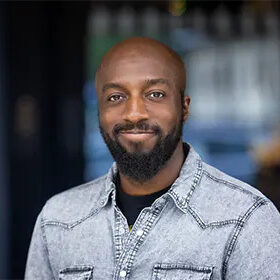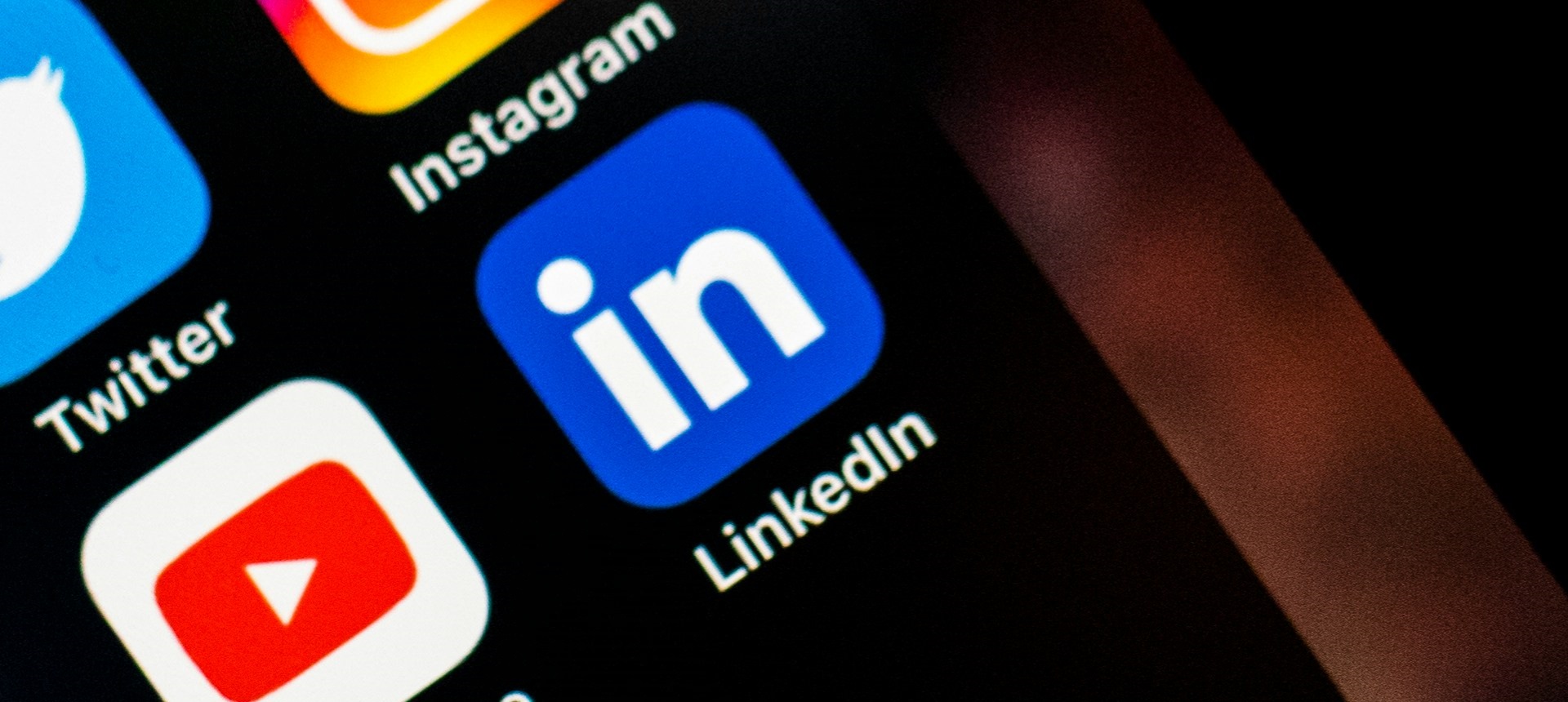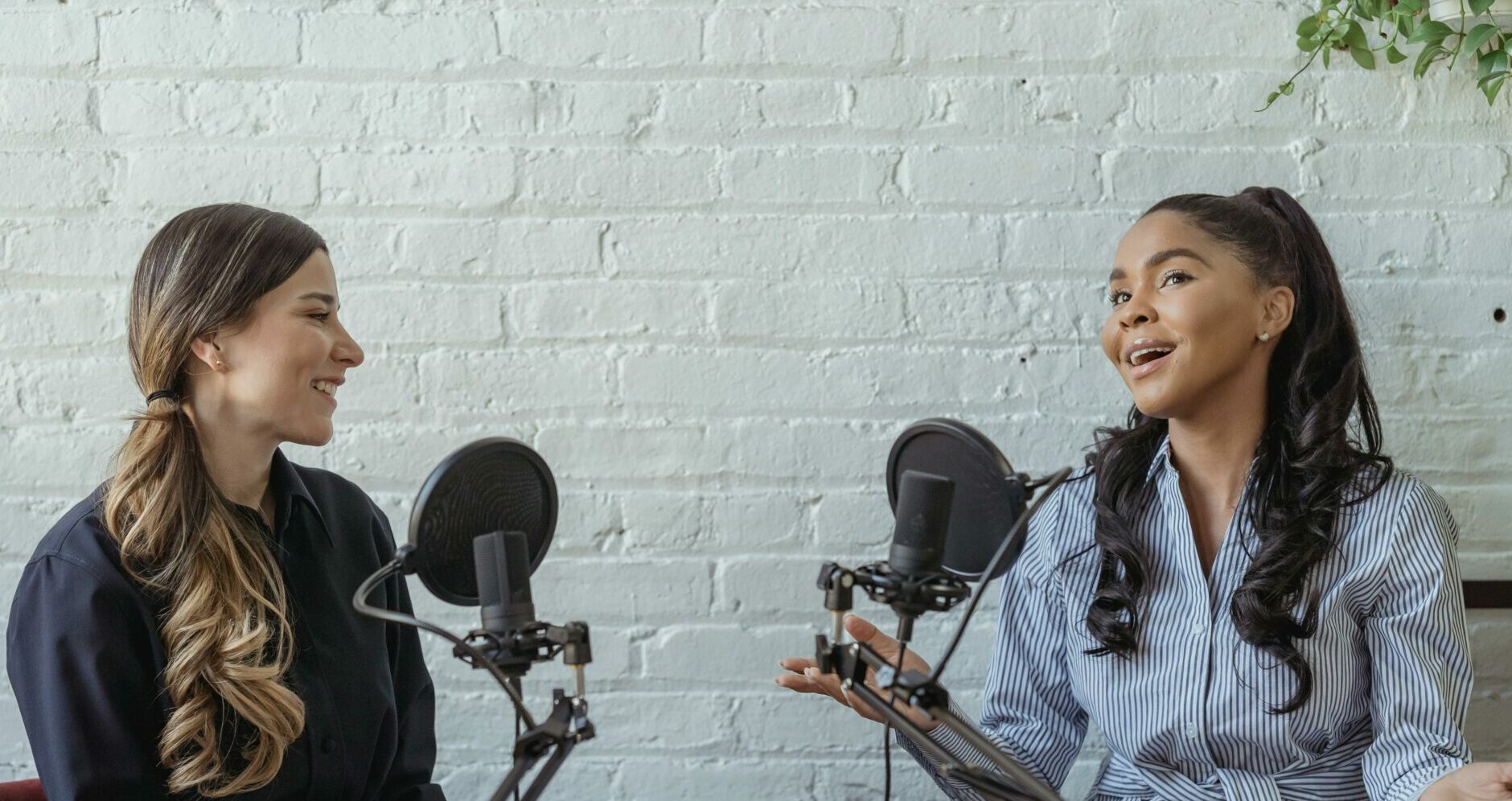Welcome to the Collective Content Podcast’s How to choose a content agency series, episode 6 ‒ ‘Ways of working’. So far, we’ve looked at the “who, what, why and when” of choosing a content agency, and now our hosts Daine Lindsay and MD Tony Hallett are joined by senior editor Bill Clark and senior content manager Fanny Abramczuk, to dig into the “how”. This episode covers the questions:
- How do you successfully work with your content agency?
- How do you ensure the process is as smooth as possible?
- How do you develop your partnership?
Find out the dos and don’ts for both the agency and the client, and the benefits of working with different types of content teams around the world. And check out the full Collective Content How to choose a content agency guide, available here.
You can also find the episode here:
Episode Transcript
Bill: Getting a diverse range of members on the team from different locations. There is an advantage to that because if you’ve got people in different locations, they have different perspectives, they come at each question with maybe a slightly different point of view and there can be real benefits in that. There are also drawbacks, in that you have to be maybe clearer in your communication. One of the things that I learned two years ago is that when somebody in the UK says to you “Yeah, we have a bit of a concern about this thing,” that means ‘it’s all on fire’, right? Whereas if I say that, it means there’s just a small concern.
One, two, three, four.
Daine: Hello and welcome to the Collective Content Podcast. My name is Daine and this is our How to choose a content agency series episode number five – Ways of Working. Once again, we have two great guests to help companies choose their next agency wisely. I’m joined by Bill Clark, a Collective Content senior editor and Fanny Abramczuk Collective Content senior content manager, to dive into what works well or not. And if you want to get your hands on more expert advice on this subject, then please check out the full Collective Content How to choose a content agency guide available on our website. Link in the description.
But right now, also joining us is my co-host, Collective Content managing director Tony Hallett. Hi, Tony.
Tony: Hey there. Good to be here.
Daine: Thanks, Tony. And so what are the differences between a small and big size company working with an agency?
Tony: Okay, I’ll take that as a good starting point, Daine. So, when we’ve been talking around this, I think one of the big things to say is that the whole working with your agency is not just about the content side of things and producing content, and that’s actually going to be a whole other guide that we’re going to have coming up next. What you’ll find in this area and on this podcast certainly is that this is about all the mechanics of being set up, ready to do the work. Earlier in the series, we’re saying all the ways of like checking out an agency before you spoken to them, getting the chemistry right, and then the practicalities of onboarding and legal. And that’s actually one of the big areas where big and small agencies differ. So you have to start with things like whose contracts are we using, normally is going to be the client’s contract, especially if they’re a big company – not always. Have you got NDAs in place? You know, just working out ‘Is the agency suited for a business of your type?’ That’s the main thing in mind, I think.
Daine: Thank you. So what should a client expect to see from the agency at the start, Fan?
Fanny: One of the first things that we would go in with is setting up the statement of work or scheme of work. SoW
Tony: Scope of work even
Fanny: Which – scope of work. Yeah. Yeah.
Tony: There’s lots of S’s.
Fanny: Yeah, absolutely. It would generally that’s a sort of description of what work has been agreed. And it would also include some costings. So that would probably be itemized sort of each individual content asset possibly, or if you’re doing a whole project, that would be outlined as well. And then also the team that you’d be dealing with. So the sort of the account manager, project manager, yeah, they might also be included in that any sort of additional charges or fees, for example, if something goes wrong or the project needs to be sort of finished prematurely for any reason or something like that, that might be in the SoW as well. Possibly also who’s responsible for signing off as well? At the end of the project.
Daine: Welcome to the podcast, Bill. Anything to add to what Fan said?
Bill: Yeah, thank you Daine. I think Fanny said a lot of very insightful things there, from my perspective as a senior editor, I’m thinking that this stage is sometimes overlooked to its importance, but you will see if you try to skip it or skimp on it, the consequences. There’s an old saying “Act in haste, repent at leisure”. And when you get those clients in and it happens, sometimes they come running in, it’s like, “Oh my God, we have to have this. We have to have it by Tuesday because we’re going to a trade show and we need it and we need it and we need it and we need it.” And you’re like, “Well, we should do a scope of work and lay out what’s going to be done.” They’re like “Okay, well, yeah, we’ll get all that sort of, but can we just get started now?” Very often this process of setting out the scope of work is them talking through what they need and fully realizing it so that in their mind they know what the end product should look like. And if they haven’t done that, they’re not going to be sure what it was supposed to be when we get there. And for our part, if it hasn’t been laid out for us, what we’re supposed to achieve, there’s that feeling of sort of stumbling in the dark sometimes. And, you know, are we on target?
Tony: Bill I so thought you were going to say fail to prepare, prepare to fail. Or we could go in other directions too. But that’s not the subject of this podcast.
Daine: And so how do project management platforms play a role in working with an agency, Fan?
Fanny: Well, they’re pretty useful, to be honest. So especially if you’re working on a really complex kind of project or it’s a really big client, but even on smaller projects, there’s often a lot of balls that you’re juggling. And so having a platform like Asana or Monday.com or click up can really help you just keep everything in line, make sure that you’re meeting all your deadlines, informing everybody who needs to be informed of what’s happening. Keeping on top of emails, all of that kind of stuff. Also, something that that could often get a bit confusing is when you’ve got several different rounds of amends to content. So the clients reviewing something, they return it to us, excuse me, and that’s looked at by a writer and there can be lots of sort of to-ing and fro-ing with editing, proofreading, and so keeping on track with all of that can be, can be complicated. So, a project management system is pretty invaluable from that point of view.
Daine: Thanks Fan. Tony, how about MarTech?
Tony: Yeah. So marketing technology is absolutely a factor. However, it’s normally adjacent to our world rather than in our sweet spot. And what I mean by that is that we’re often providing content that works in all kinds of marketing automation systems and other forms of MarTech. So quite often a client or one of their other agencies will ask us for the content and then they’ll do the plugging in.
So if anyone’s asking us for advice on this, etc., we know the right people to bring into the room. But that’s not our sweet spot. And for most content agencies, I’m pretty confident in saying that’s not their sweet spot.
Fanny: I think something else to add there, is there are a lot of kind of software that you can use that will help make the process run more smoothly. So for example, if there are several agencies working with a client, something like Slack, where you can kind of have group chats and things can be really, really helpful, but there are also can be pain points, for example, like onboarding, sort of security issues, that kind of stuff. So being aware of who your agency might need to contact at your firm, for example, to get onboarded with different systems, who needs to have access to your systems to be used like a cloud, or a kind of document sharing platform, that kind of stuff. So there’s lots of things to think about when it comes to technology and software that we might use.
Tony: Things like your client letting an agency use their CMS to upload to the website. It happens. In my experience, that happens more with the smaller clients. The larger clients tend to be very, very buttoned down because it’s such a big thing having control of the website, even the internal teams are kind of very separate talking to the people we’re dealing with in marketing. So that is absolutely a platform the agencies might get involved in and every agency should be pretty experienced with CMS’ – content management systems, but it’s not going to be the majority of the time.
[Sound Break]
Daine: Bill, how does location affect the way of working?
Bill: Okay. That’s a good question. And I think that there are advantages to working with a team that are in a decentralized location – your location, and that is that obviously you can get that face time. There can be a lot of interaction and there can be some good things that come out of an actual meeting in a room. And very often everybody’s sort of on the same page, they have the same context for what is the market like, what are people in the market like, what are the conditions in the market like, and you don’t need to articulate every single detail because everybody knows what they’re like.
That said, getting a diverse range of members on the team from different locations, there is an advantage to that because if you’ve got people in different locations, they have different perspectives, they come at each question with maybe a slightly different point of view and there can be real benefits in that. There are also drawbacks, in that you have to be maybe clearer in your communication. One of the things that I learned years ago is that when somebody in the UK says to you “Yeah, we have a bit of a concern about this thing.” That means “it’s all on fire”, right? That’s what that means. Whereas if I say that, it means there’s just a small concern.
So you need to understand how to read what those other people are saying or everybody needs to be very clear in articulating what the actual concern is. From my experience in working in Japan, it can be even more subtle than that. In Japan, you know, somebody gives you a little tilt of the head and a *inhales deeply*, you know, that is – it’s a disaster, that means it’s a disaster. So you need to be more concise and more articulate when working with teams in different areas. There’s also the benefit that we have, for example, with people in different zones, where you can hand off from one zone to the next and sort of keep some flow going on things. Something can be handed off from the UK to me and I can hand it off to our Asia team and we can get effectively a 12‒14 hour workday on it.
Tony: And you know what it’s like. Often our clients are matched up, so we might be having three or four people around the world working on something. But equally on the client side, there are 3 to 4 contacts, not necessarily in the same places, but with maybe an equal kind of span of time zones. So it works really well on that level as well.
Bill: Yeah, particularly with the spread of remote working. We’re seeing so much of that where, for example, I’ll be on a on a call with somebody who’s on the west coast of North America, and they’re just happy to have somebody in their time zone because they’re used to dealing with people 8 hours away.
Daine: So, Fan, what else is and what isn’t appropriate behaviour when working with an agency?
Fanny: Key things, obviously, you’ve always got to be professional. But that said, it’s really nice to build up sort of a really nice, friendly working relationship with the people that you’re working with regularly. And so, I think you’ve got to kind of get that balance right of the sort of the friendliness aspect, but also doing a professional job and communicating things clearly. And so things that might fall under that is when and how you contact people and, you know, being aware of I mean, Bill was just talking about, sort of different locations, different time zones, when people are available, when people may have days off or like religious holidays, stuff like that. So it’s just yeah, kind of being aware of all of those aspects, understanding people’s cultures. So if we have calls with clients who are maybe based in the Middle East, for example, they may have a different kind of cultural expectations than the UK clients or, as Bill was saying, in Japan they have a different kind of way of approaching things again. So that all helps. And, you know, things like meeting up in person is really great in the sort of, you know, currently we do a lot of remote working, but building relationships by actually meeting people in person is really good as well.
Daine: Tony, anything to add?
Tony: Yeah, I would say that, often think about the sort of cadence of the work with your agency as a bit of a tennis match, the back and forth of individual assets, individual items of content, it goes from the agency side to the client side and back and forth again a number of times. Really look out for things like good planning and good habits. So good planning are things like content calendars, you know, project plans that should show by the day when something is supposed to be with either side, and try to stick to those as near as possible. The big secret – not really a secret at all – is that those project plans never are stuck to, exactly, but at least getting part of the way there will help. So just be really keenly aware of when something is expected on your side for a review or a sign off, and when the agency has it on their side with their team. And just communicate if something goes wrong, if someone’s sick or something has to get pushed back or pulled forward. As Bill said, actually us getting a request in with a 24 hour, 48 hour turnaround is not unheard of, but there are good and bad versions of that. So it’s just communication and knowing that each sides knows what to expect.
Daine: Thank you. And, we’ve actually touched on this in a little in episode three, where we discussed chemistry and getting the right feel for the agency, but Bill, how important is it to get to know your agency better and vice versa, especially when you begin working together?
Bill: I think that’s really important, the better you can understand each other, the more likely you are to produce something that’s really great. It does develop over time, but to answer your question about the early stages, spend some time talking, spend some time on that call, finding out what is important to the client. That’s what we’re doing. The client should, for their part, articulate what’s important to them. What pressures are they under? What concerns does the company have? What is the work environment like? We’re not asking you to spill trade secrets or to gossip, but if you can say, “Yeah, this is what we’d like to accomplish, it’s crazy here. You know, we had one of our interns leave and move on to a full time job some place else, so we’re a bit short staffed.” If we understand that pressure you’re under, what concerns you have, and where we can maybe fill in gaps that can be really helpful.
And also, do not underestimate the importance of a little idle chit chat, because you can each learn things about each other and what’s important and find additional ways to help each other either on a given project or as the relationship matures going forward. If you put that little bit extra in, you can often get a lot out of it.
Daine: Fan, anything to add?
Fan: I think you can have some relationships where it is very just transactional and you know, you’re just given the brief and you need to get the job done so you can work through the projects in that way. But generally, I think building a sort of a strong relationship and getting to know people and maybe sort of, you know, getting to know who you’re working with, getting to know people’s names, both them knowing us and us knowing them is really important. And it can help to grow a relationship that continues, you know, over and above just that initial project. And, you don’t know where it might take you. So yeah, I think that’s important.
Bill: I would agree with you on that, Fan. And if I could just chime in an additional thought on that. To me, the reason people are using an agency, the reason they’re coming to us is to take away stress and concern, and free themselves from worry. I think the better you know us, the better that we know you, the more that we can do for you, the more that we can take off your shoulders. Maybe we understand better, so we can suggest things that we can do to help, and maybe it’s just that the relationship develops to the point where, you feel that we can do it, you can trust us, you can let that go, and you have that less stress. And that seems a great reason to come to an agency. So take advantage of that benefit.
Fan: Yeah, I think that idea of trust is really important. I think being able to build a relationship so that you properly trust each other and you know you’re going to do a good job, is really key.
[Sound Break]
Daine: Lastly, Tony, how should a company allocate its content budget?
Tony: In short, don’t allocate it all for an immediate big bang project. And what that means is consider the long term over the short term. And there’s this old saying in the content world of ‘Your content is from now until forever’, which sounds kind of scary, but actually it needn’t be. All it means is unlike certain other projects – so for example, a big website redesign another agency might do – you don’t do your website every six months, right? It’s like buying a house or something, you get it done, it’s a big thing, ideally, it has very, very minimal maintenance then for months or years afterwards. With content, there may be an initial surge, especially if you’re playing catch up and you feel like you’re behind and you’ve not been in a respectable place with your content for a while. So there might be an initial peak, but then there’s maintenance and there’s new content creation forever, and there’ll be certain peaks and troughs through a year, there’ll be different changes in direction, you name it, just don’t use all your budget upfront. And what we would say to any client is speak to us about this, this is not some sort of forbidden conversation. Talk about “this is the budget we have. Our new year doesn’t start until nine months from now. What would you recommend?” And a good agency will have your back and not just grab the money. They will say this is how to carefully allocate it so you can get the best result from the content that is planned out over that time.
Multiple voices: This is the Collective Content podcast.
Daine: I’d like to say thanks to both our guests today, Bill and Fan, and thank you to as well Tony.
Tony: Thanks as always Daine, Bill, Fan.
Fanny: Thank you
Bill: Been a pleasure. Thanks for having us.
Daine: It’s been great chatting with you and touching on some of the best ways of working with an agency, a subject we’ll be returning to soon. And thank you to the listeners. We’ll be looking even deeper into what it takes to choose a great content agency when we discuss diversity, equity, inclusivity and belonging in our next episode. So please join us again then. In the meantime, don’t forget you can always get more quality insights in Collective Content’s How to choose a content agency guide on our website, links in the description. Check it out and let us know your thoughts on Twitter/X and LinkedIn. So until next time, take care.











